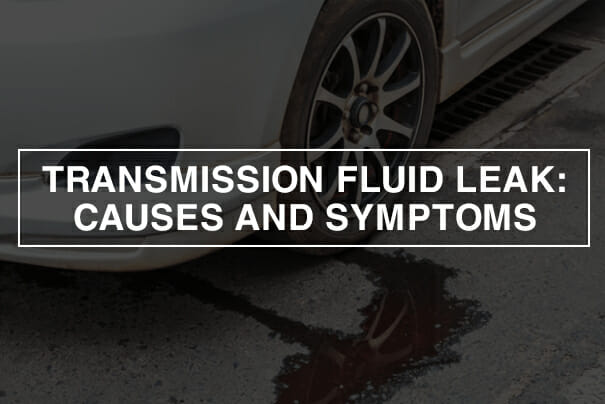Every automobile has a lifeblood that permits vehicle transmission called the transmission fluid. This fluid plays important roles like actuating gear changes via hydraulic pressure and removing heat from the internal components for transmission.
Without transmission fluid, your vehicle is paralyzed. And that’s why it’s a cause for alarm when it starts to leak. Plus, it is a costly problem to fix.
This article will provide you with the most common symptoms and causes of transmission fluid leak and how you can fix them. Read on!
Symptoms of Transmission Fluid Leak
Low Transmission Fluid Level
If there is a transmission fluid leak in your car, the fluid level will reduce over time, so do well to check it regularly. Depending on the model of your vehicle, you might need to visit a technician to check the level of your transmission fluid.
Older car versions are easier to access because they use a dipstick to check the fluid level, but newer versions are sealed. When checking your transmission fluid level, ensure that the level is between the minimum and maximum recommended level.
Note: Underfilling and overfilling are both dangerous to your vehicle.
Learn more about the type and capacity of transmission fluid used for your car at Oils Advisor.
Red/ Brown Puddle Beneath Your Car
Puddles beneath your car are one of the easiest symptoms you can use to identify a transmission fluid leak. Still, some people will miss it because they do not know how to distinguish between transmission fluid and other fluids.
Transmission fluids are usually red or brown, but the color is not enough to identify it. So, when you see a puddle on the ground, the first thing is to dip your hand into it. The goal is to ascertain the color and the texture of the fluid. Besides, if you see red or brown color with a slick and oily touch, it is transmission fluid.
Grinding Gears
When the transmission fluid level in your vehicle is low, it reduces its lubricating function, and the number one cause is transmission fluid leak.
The low fluid level leads to friction between the gears, producing a grinding sound to indicate a problem. Quickly check all your fluid levels to ensure they are okay whenever you hear a grinding sound.
Burning Smell And Overheating From Transmission
One crucial function of transmission fluid is to reduce heat within the internal gears. So, when the fluid begins to leak, the efficiency also drops, leading to overheating.
When your vehicle is overheating due to a transmission fluid leak, you will feel the heat from the transfer case on the floor. Also, you can check your dashboard to see if there is any indication of overheating on the temperature gauge.
Besides, there is a burning smell that accompanies overheating due to transmission fluid leaks. Though, not all burning smells might be from overheating. But it is a sign that something is wrong, so do well to check if your transmission fluid is leaking or low.
Causes Of Transmission Fluid Leak
Broken Seals
An automatic transmission uses seals to maintain hydraulic pressure, and these seals can break or crack due to wear and tear. But, continuous exposure to heat (due to dirty ATF) can speed up the cracking of the seal.
When the seal is broken or cracks, it can lead to a transmission fluid leak. And may trigger other potential sources of leaks.
How To Fix
- Use a car ramp to raise your vehicle on an even surface.
- Locate the transmission box and undercarriage, and ensure that your gear shift is neutral.
- Locate the front seal and remove any obstruction like transmission key, balancer belt, engine belt, etc.
- Remove the driveshaft with a screwdriver.
- Loosen the seal and pull it out.
- Place oil around the seal opening and input the new seal correctly.
- Reinstall the other components you removed and ensure that they align adequately.
Fail Transmission Pan And Drain Plug
As you continue to drive your car, the transmission pan experiences wear and tear due to impact from roadside debris and rocks on the highway.
If there are loose bolts, drain plugs, or a tiny puncture on the transmission pan, it can lead to fluid leaks. Also, the flow rate of the leaking fluid depends on the extent of the damage. Larger rocks will cause more damage to the pan, which will make the leaking easy to notice.
Consequently, if the damage is minor, you might not see the leak on time.
Be cautious when fixing your drain plug or bolt to ensure that it is not less or over-tightened because it could lead to a fluid leak, especially after changing the transmission fluid in your car.
How To Fix
The best solution is to replace the broken transmission pan with a new one. You can visit your mechanic to change it. In case you want to do it yourself, you can check the step guide on how to change the pan gasket below. This is because you need to remove the transmission pan to change the gasket.
Damaged Pan Gasket
A poorly manufactured gasket on your transmission pan will be easily cracked or damaged. Also, exposure to hot temperatures and bad alignment during installation can affect the pan gasket negatively. But the good news is that the pan gasket is very affordable to replace. Avoid any delays as it can further damage your vehicle if ignored for long.
How To Fix
- Use a car ramp to raise your vehicle on an even surface.
- Place a flat pan underneath the car and unclip the transmission pan for the fluid to flow into the pan.
- Using a wrench, unscrew the bolts that connect the transmission and pan, and then pry the pan from the transmission with a flathead screwdriver.
- Allow all the transmission fluid to drip out.
- Clean the tip of the transmission pan and the transmission it is connected to, and then allow them to air dry.
- Fix the new transmission pan gasket to the transmission properly.
- Then, pour in new transmission fluid to replace the drained fluid.
- Lower your car and start the engine; allow it to run to observe the operating temperature.
Cracked Transmission Fluid Lines
The fluid lines are constructed with durable materials like aluminum and steel to secure the passage of the fluid. But, wear and tear are almost inevitable due to constant exposure to heat and impact from road debris. And this can lead to breakage or crack of the fluid line.
How To Fix
To fix the problem of fluid lines, you have to replace the line entirely, and below are the step-by-step guide to follow;
- Use a car ramp to raise your vehicle on an even surface.
- Place a pan underneath the car and unclip the transmission line for the fluid to flow into the pan.
- Using a wrench, unscrew the nuts that connect the transmission line and then pull it off.
- Allow the remaining oil to drip out.
- Spray brake cleaner on the connecting point.
- Fix the new transmission line to the radiator and transmission properly.
- Then, pour in a new transmission fluid to replace the drained fluid.
Lower your car and start it to ensure everything is in order
Torque Converter
The torque converter is the medium through which transmission fluid is propelled to the whole vehicle. A crack or damage to the torque converter can lead to a transmission fluid leak, and to fix this cause, you have to visit a mechanic shop.
How To Fix
- Disconnect the car battery
- Remove the air cleaner from the engine compartment
- From the turboshaft pulley, remove the masseur
- Remove the turboshaft pulley from the car
- Remove the torque converter.
- Install the new torque converter.
- Install all the components you removed adequately.
Note: Visit a technician to replace the torque converter because it requires some technical skills.
Transmission Leak Repair Costs
Fixing a transmission fluid leak is between $150 to $200 on average for minor repairs like changing fluid lines, seals, gaskets, pan bolts, and drain plugs.
The cost will increase if you need to fix a new transmission, and it could rise to $1,000 when fixing a new torque converter.
Conclusion
The transmission fluid leak is one of the most common problems that affect the transmission system. And if proper maintenance protocols are neglected, it can be costly to remedy.
The symptoms, causes and tips on how to fix them have been provided in this article. You will spend less if you follow the signs and symptoms to prevent worse damage to your car due to transmission fluid leak. The choice is yours to make; choose wisely.







